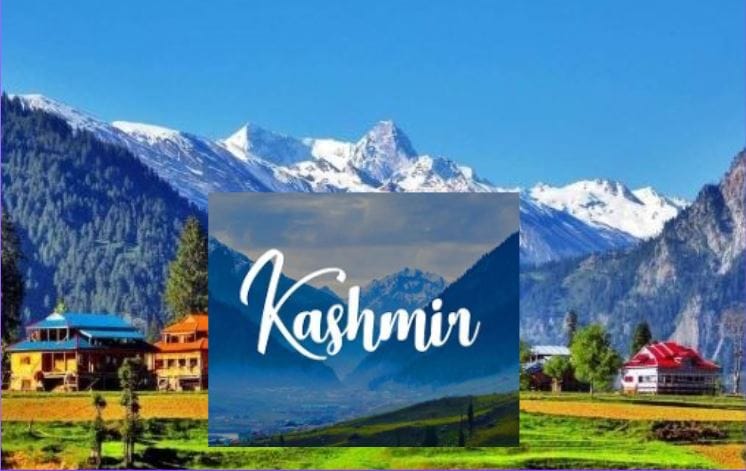The Kashmir Attack
The Kashmir attack, which claimed 26 lives and injured more than 20 others, has once again thrust the complex and longstanding Kashmir conflict into international spotlight

A Historical and Contemporary Analysis
The recent terrorist attack in Pahalgam on April 22, 2025, represents one of the deadliest incidents in Jammu and Kashmir since the 2019 Pulwama bombing. The attack, which claimed at least 26 lives and injured 17, has once again thrust the complex and longstanding Kashmir conflict into international spotlight. This tragedy, executed by militants affiliated with The Resistance Front (TRF), an offshoot of Pakistan-based Lashkar-e-Taiba, highlights the persistent religious tensions, territorial disputes, and geopolitical complexities that have characterized the Kashmir region for decades. The perpetrators specifically targeted non-Muslim tourists, employing religious tests to identify victims, and claimed their actions were motivated by opposition to alleged demographic changes in the Kashmir Valley. This attack serves as a stark reminder that despite periods of relative calm, the underlying issues driving the Kashmir conflict remain unresolved, with historical grievances, territorial disputes, and religious tensions continuing to fuel violence in one of the world's most militarized regions.
The 2025 Pahalgam Attack: A Detailed Account
The Attack and Its Immediate Aftermath
On April 22, 2025, at approximately 14:50 local time, a group of four to six militants launched a deadly attack on tourists at the Baisaran meadow near Pahalgam in the Anantnag district of Indian-administered Jammu and Kashmir. The area, a popular tourist destination only accessible by foot or pony, was crowded with visitors enjoying improved weather conditions after several days of rain when the attack occurred. The militants, wearing military-style uniforms, emerged from nearby forests and methodically opened fire on the unsuspecting crowd, creating scenes of terror and chaos in what had moments before been a peaceful tourist gathering.
Survivor accounts reveal the calculated nature of the attack, with the assailants initially posing as police officers before commencing their assault. In a chilling demonstration of religious targeting, the attackers reportedly asked victims to recite the kalma (Islamic declaration of faith) and checked for circumcision to identify Muslims, whom they largely spared. The attackers specifically singled out non-Muslims, executing many of them at close range. One attacker allegedly told a female victim that she was being spared so she could "narrate the horrors" to Indian Prime Minister Narendra Modi, indicating the political messaging behind the violence. Eyewitness videos captured the devastating aftermath, showing bloodied victims lying on the ground and others desperately pleading for assistance, while family members screamed for help for their injured loved ones.
The emergency response began as soon as news of the attack reached district headquarters. Medical teams worked urgently to transport the injured to nearby medical facilities, with the most critically wounded being taken to Anantnag District Hospital by 16:30. Some victims required more advanced medical care and were airlifted by helicopter to a military hospital in Srinagar. Meanwhile, security forces comprising local police and the Indian Army immediately launched a joint search and cordon operation in the area, deploying helicopters to locate the attackers and imposing a temporary lockdown across parts of Pahalgam.
Casualties and Victims
The human toll of the Pahalgam attack was severe, with at least 28 civilians confirmed dead and 20 others injured. The victims represented a diverse cross-section of Indian society and included international visitors. Among the dead were 24 Indian tourists from various states including Karnataka, Kerala, Maharashtra, Odisha, Gujarat, Haryana, West Bengal, and Uttar Pradesh. Two local residents from Jammu and Kashmir also perished in the attack, alongside two foreign tourists from Nepal and the United Arab Emirates. The injured individuals came from Gujarat, Tamil Nadu, and Maharashtra, underscoring the attack's impact on visitors from across India.
The casualties included individuals from various professions and backgrounds, notably a 26-year-old Indian Navy officer and an Intelligence Bureau official, adding a national security dimension to the tragedy. The attack's targeting of tourists—civilian visitors with no direct connection to the conflict—represents a particularly disturbing escalation in the Kashmir violence, designed to attract maximum attention and undermine the perception of safety in the region. By deliberately selecting tourists from across India and international visitors as targets, the attackers sought to amplify the psychological impact of their actions beyond the immediate geographic area of Kashmir.
Responsibility and Motives
The Resistance Front (TRF) quickly claimed responsibility for the attack. The group, recognized as an offshoot of the Pakistan-based militant organization Lashkar-e-Taiba, stated that their actions were motivated by anger over what they described as the settlement of more than 85,000 "outsiders" in Kashmir, which they claimed was driving a "demographic change" in the region. This justification reflects longstanding concerns among some Kashmiri separatists about potential alterations to the demographic composition of the Muslim-majority Kashmir Valley, fears that intensified following India's 2019 revocation of Jammu and Kashmir's special autonomous status.
The TRF's emergence as a significant militant actor in Kashmir represents a continuation of decades of insurgent activity in the region, with shifting organizational structures but persistent ideological motivations. The group's targeting of civilians, particularly those identified as non-Muslims, demonstrates the religious dimension that has increasingly characterized the conflict in recent years. The selective sparing of Muslim victims and explicit targeting of Hindus and other non-Muslims connects this attack to previous religious-motivated violence in the region, including historical massacres such as the 2000 Chittisinghpura incident.
Government and International Response
The attack prompted immediate and high-level responses from the Indian government. Prime Minister Narendra Modi cut short his visit to Saudi Arabia to address the crisis, emphasizing that those responsible would face justice and reaffirming India's commitment to combating terrorism. Union Home Minister Amit Shah traveled to Srinagar to personally assess the situation and coordinate security responses. Similarly, Union Minister for Finance and Corporate Affairs Nirmala Sitharaman curtailed her official visit to the United States and Peru to return to India following the attack.
Indian security forces launched an extensive manhunt to apprehend the perpetrators, while authorities established a helpline to assist affected tourists and their families. The response extended beyond security measures, with demonstrations erupting across Indian-administered Kashmir condemning the attack. Some protesters in Jammu explicitly blamed Pakistan for the violence, highlighting the regional tensions that continue to characterize the conflict.
International reaction was swift and widespread, with multiple countries condemning the attack and offering condolences to the victims. The European Union and the United Nations also issued statements denouncing the violence. Chief Minister Omar Abdullah characterized the incident as "much larger than anything we've seen directed at civilians in recent years," underscoring the attack's significance in the context of Kashmir's troubled history. President Droupadi Murmu described it as a "dastardly and inhuman act," while opposition leaders including Congress MP Priyanka Gandhi called it a "crime against humanity," and Leader of Opposition Rahul Gandhi described the attack as "horrific". This broad condemnation across India's political spectrum demonstrates the national impact of the tragedy.
Historical Origins of the Kashmir Conflict
Pre-Independence Period and the Dogra Dynasty
The complex roots of the Kashmir conflict extend deep into the region's history, with the modern territorial dispute largely shaped by developments in the 18th and 19th centuries. Kashmir was ruled by the Afghan Durrani Empire from 1752 until its conquest by the Sikh Empire under Ranjit Singh in 1819. The foundation for the modern princely state of Jammu and Kashmir was laid when Gulab Singh, then the Raja of Jammu and a vassal of the Sikh Empire, gradually encircled Kashmir through military expeditions to various border kingdoms by 1840.
Following the First Anglo-Sikh War (1845-1846), Kashmir was ceded to the British East India Company under the Treaty of Lahore. The British then transferred Kashmir to Gulab Singh through the Treaty of Amritsar in exchange for the indemnity owed by the defeated Sikh Empire. With this transaction, Gulab Singh assumed the title of Maharaja of Jammu and Kashmir, establishing the Dogra dynasty that would rule the princely state until India's partition in 1947. During this period, the British Raj maintained control over defense, external affairs, and communications for the princely state while stationing a British Resident in Srinagar to oversee internal administration.
The Dogra rule, despite governing a Muslim-majority population, established a predominantly Hindu administration. According to the 1941 census, the state's population was 77 percent Muslim, 20 percent Hindu, and 3 percent others (primarily Sikhs and Buddhists). This religious imbalance between rulers and the ruled created tensions, with the Muslim majority suffering under high taxation policies and limited opportunities for advancement. These grievances would later influence the political alignments during the independence movement and partition.
Political Movements and Pre-Partition Tensions
By the 1940s, as independence for the Indian subcontinent became increasingly likely, various political movements emerged in Jammu and Kashmir with differing visions for the region's future. In 1946, the National Conference led by Sheikh Abdullah launched the "Quit Kashmir" movement, calling on the Maharaja to transfer power to the people. This movement faced criticism from the rival Muslim Conference, which accused Abdullah of pursuing personal popularity through his increasingly pro-India stance. The Muslim Conference responded with its own "campaign of action" modeled after the Muslim League's program in British India and by July 1947 was openly advocating for Kashmir's accession to Pakistan.
Meanwhile, Hindu political organization in Jammu coalesced around the All Jammu and Kashmir Rajya Hindu Sabha, with Prem Nath Dogra as a prominent leader. The Rashtriya Swayamsevak Sangh (RSS) established a presence in the state when Balraj Madhok arrived as a pracharak (promoter) in 1942, setting up branches in Jammu and later in the Kashmir Valley. Initially, following the announcement of the partition plan in May 1947, the Hindu Sabha supported whatever decision the Maharaja might make regarding the state's status, effectively backing independence. However, this position shifted dramatically following the communal violence associated with partition and the subsequent tribal invasion, with Hindu leaders then advocating for accession to India.
These divergent political aspirations—independence, accession to Pakistan, or integration with India—set the stage for the conflict that would erupt following the partition of the subcontinent. The pre-existing religious tensions, uneven political representation, and competing visions for Kashmir's future created a volatile environment as the British prepared to withdraw from the subcontinent in 1947.
The Partition Crisis and First Kashmir War
The partition of British India in August 1947 created an immediate crisis for the princely states, which were theoretically given the choice to join either India or Pakistan or remain independent. For Jammu and Kashmir, with its Muslim majority population but Hindu ruler, this decision was particularly fraught. Maharaja Hari Singh, the grandson of Maharaja Gulab Singh, initially hesitated, preferring independence but facing pressure from both India and Pakistan.
The situation deteriorated rapidly in October 1947 when tribal forces from Pakistan's North-West Frontier Province, supported by Pakistani military elements, invaded Kashmir with the goal of forcing its accession to Pakistan. These "raiders" made quick advances into the Baramulla sector, creating a crisis for the Maharaja's government. Facing military collapse, Maharaja Hari Singh signed an Instrument of Accession to India on October 26, 1947, in exchange for military assistance. Indian troops were airlifted to Srinagar the following day, beginning what would become the First Kashmir War.
The Pakistani army, while officially entering the conflict in May 1948 ostensibly to defend Pakistan's borders, had been providing arms, ammunition, and supplies to the rebel forces since the beginning of the invasion. As C. Christine Fair notes, this marked the beginning of Pakistan's strategy of using irregular forces and "asymmetric warfare" to maintain plausible deniability, an approach that has continued in various forms ever since. The advancing Pakistani forces and tribal militias committed atrocities against Hindu and Sikh populations in areas they captured, including the Rajouri Massacres in November 1947, which claimed more than 30,000 lives, and the Mirpur Massacre later that month, which resulted in approximately 20,000 deaths.
The war continued until the end of 1948, with the United Nations playing an increasingly prominent role in seeking a diplomatic resolution. On November 1, 1947, Lord Mountbatten proposed to Muhammad Ali Jinnah that in princely states where the ruler did not accede to a dominion corresponding to the majority population (which would have included Kashmir, as well as Junagadh and Hyderabad), the accession should be determined by "an impartial reference to the will of the people". Jinnah rejected this proposal, arguing instead that states should accede according to their majority population without the need for a plebiscite. Later, when a UN-supervised plebiscite was discussed, Jinnah demanded the simultaneous withdrawal of troops, believing that "the average Muslim would never have the courage to vote for Pakistan" with Indian troops present and Sheikh Abdullah in power.
India referred the dispute to the United Nations Security Council in December 1947 under Article 35 of the UN Charter, which allows member states to bring to the Security Council's attention situations "likely to endanger the maintenance of international peace". This internationalization of the Kashmir conflict established a pattern that continues to this day, with the region remaining a focal point of tension between India and Pakistan and subject to international diplomatic attention.
The Evolving Conflict: Post-Independence to Present
Militarization and Insurgency
Following the initial war and ceasefire, Kashmir remained divided along what became known as the Line of Control, with India controlling approximately two-thirds of the former princely state, including the Kashmir Valley, Jammu, and Ladakh, while Pakistan administered the remaining territory, including Azad Kashmir and the Northern Areas (now Gilgit-Baltistan). This territorial division, intended as temporary pending final resolution, has largely persisted despite several subsequent wars and changes in administrative structures.
The modern phase of the conflict intensified dramatically in 1989 when an armed insurgency erupted against Indian rule in the Kashmir Valley. This uprising emerged after years of political disenfranchisement and alienation of the local population, with logistical support provided by Pakistan. The insurgency found little support in Jammu and Ladakh, where it instead revived demands for autonomy from Kashmiri dominance and greater integration with India. While initially led by groups seeking an independent Kashmir based on self-determination principles, the insurgency was quickly dominated by Pakistan-backed jihadist organizations advocating merger with Pakistan.
The militancy continued through the 1990s and early 2000s, increasingly relying on foreign militants and extending into parts of the Jammu region. This period witnessed tens of thousands of casualties, both combatants and civilians, and precipitated the exodus of Kashmiri Hindus (Pandits) from the predominantly Muslim Kashmir Valley in the early 1990s. Indian counterinsurgency operations intensified, characterized by increased militarization of the region and allegations of human rights abuses against the local population. Meanwhile, various insurgent groups engaged in terrorist activities, targeted killings, and other criminal actions.
Recent Developments and Civil Unrest
The 2010s marked a shift in the nature of the conflict, with civil unrest becoming a prominent feature in the Kashmir Valley. These disturbances were fueled by continued militarization, allegations of rights violations, administrative mismanagement, and corruption. Large-scale demonstrations erupted during the 2010 unrest, triggered by what many considered a staged military encounter, and again during the 2016 unrest following the killing of a young militant from a jihadist group who had gained popularity through social media.
The February 2019 Pulwama attack, in which a suicide bomber killed 40 Indian security personnel, represented another significant escalation in the conflict. India responded with airstrikes against alleged militant camps in Pakistan, bringing the two nuclear-armed nations to the brink of war. Later that year, in August 2019, the Indian government revoked Jammu and Kashmir's special autonomous status under Article 370 of the Indian Constitution and bifurcated the state into two union territories directly governed by the central government. This dramatic change in Kashmir's constitutional status has been followed by periods of security lockdowns, communication restrictions, and continued unrest.
The April 2025 Pahalgam attack occurs within this context of longstanding conflict, representing both a continuation of historical patterns of violence and a response to more recent political developments. The targeting of tourists and the religious selection of victims echoes previous attacks on civilians, such as the 2000 Chittisinghpura massacre mentioned in the search results. The claimed motivation—resisting alleged demographic changes—directly references concerns arising from the 2019 constitutional changes, which removed restrictions on property ownership by non-Kashmiris in the region.
Geopolitical Dimensions and International Perspectives
The India-Pakistan-China Triangle
The Kashmir conflict has long extended beyond a bilateral dispute between India and Pakistan to include China as a significant stakeholder. The search results mention that the Kashmir conflict is "a territorial conflict over the Kashmir region, primarily between India and Pakistan, and also between China and India". China controls a portion of the former princely state known as Aksai Chin, which it secured following the 1962 Sino-Indian War, and has received additional territory from Pakistan from the areas it controls. This three-way territorial dispute adds significant complexity to resolution efforts and has implications for regional stability across South and Central Asia.
Pakistan's continued support for militant groups operating in Kashmir, which Indian authorities consistently allege, represents a key dimension of the conflict. As noted in the search results, Pakistan has employed a strategy of "using irregular forces and 'asymmetric warfare' to ensure plausible deniability" since the beginning of the conflict in 1947. This approach has persisted over decades, with groups like Lashkar-e-Taiba and its offshoot The Resistance Front receiving varying degrees of support from elements within the Pakistani state, according to Indian and international analysts.
India's position emphasizes Kashmir's legal accession to India in 1947 and categorizes the conflict primarily as a terrorism issue rather than a territorial dispute. Indian officials frequently cite the exodus of Kashmiri Hindus in the early 1990s and attacks like the recent Pahalgam incident as evidence that the conflict has significant religious dimensions beyond political aspirations for self-determination. The Indian government's 2019 decision to revoke Kashmir's special status was presented as an effort to fully integrate the region and promote development, though critics viewed it as an assertion of centralized control that disregarded local sentiments.
Human Costs and Civilian Impact
The decades-long conflict has exacted an enormous human toll on the people of Kashmir. The search results indicate that the fighting has "resulted in tens of thousands of casualties, both combatant and civilian". Beyond the direct casualties, the conflict has created patterns of displacement, most notably the exodus of Kashmiri Hindus from the Valley in the early 1990s, which fundamentally altered the region's demographic composition.
Civilians have suffered under various aspects of the conflict, from the "high taxes of the administration and... few opportunities for growth and advancement" during the Dogra period to the "repression of the local population and increased militarisation of the region" during the counterinsurgency operations of recent decades. The targeting of tourists in the Pahalgam attack represents a particularly disturbing expansion of civilian targeting, designed to maximize psychological impact and international attention while undermining Kashmir's economy.
The conflict has also created cycles of trauma that span generations. The selective targeting of individuals based on religious identity, as seen in the Pahalgam attack where assailants "singled out non-Muslims" and checked for circumcision to identify and spare Muslims, perpetuates communal divisions and deepens psychological scars. Similarly, the "mass murder," "ambushes," and "massacres" listed in the Wikipedia categories associated with the Pahalgam attack article reflect the recurring patterns of extreme violence that have characterized the conflict.
The 2025 Pahalgam attack represents both a tragic human cost in itself and a window into the persistent, multi-layered conflict that has characterized Kashmir for decades. From the historical roots in the princely state's complex religious and political landscape to the contemporary dynamics of militant activity, counterinsurgency operations, and international diplomacy, the Kashmir conflict continues to defy simple resolution. The targeting of tourists in Pahalgam—specifically selected based on religious identity—demonstrates how historical grievances, religious tensions, and geopolitical rivalries continue to manifest in cycles of violence affecting civilian populations.
The ongoing nature of the conflict, with its roots extending back to the pre-independence period and continuing through numerous wars, insurgencies, and diplomatic initiatives, suggests that sustainable peace will require addressing multiple dimensions simultaneously: the territorial dispute between India, Pakistan, and China; the religious and cultural aspects of the conflict; the aspirations of Kashmiri people across different regions and communities; and the security concerns of all stakeholders. The Pahalgam attack, occurring nearly eight decades after the conflict began, serves as a stark reminder that despite periods of relative calm, the underlying issues driving violence in Kashmir remain unresolved.
As the region continues to experience periodic eruptions of violence amid ongoing militarization, the prospects for lasting peace appear challenging. However, the universal condemnation of attacks on civilians like the Pahalgam incident suggests at least one point of potential consensus: that innocent lives should not be sacrificed in pursuit of political objectives. Building on such shared values, while acknowledging the legitimate concerns of all communities involved in the conflict, may offer a pathway—however difficult—toward eventual resolution of one of the world's most enduring and complex territorial disputes.











